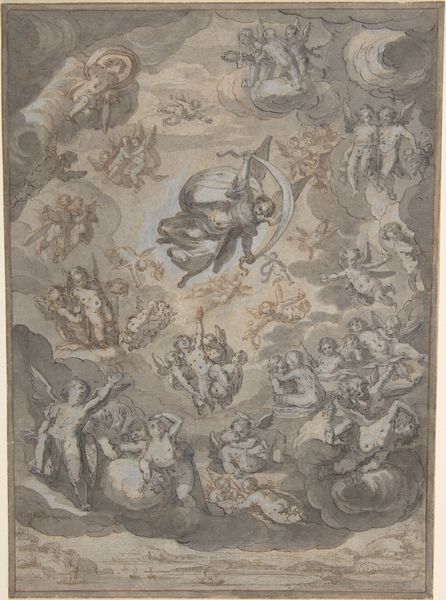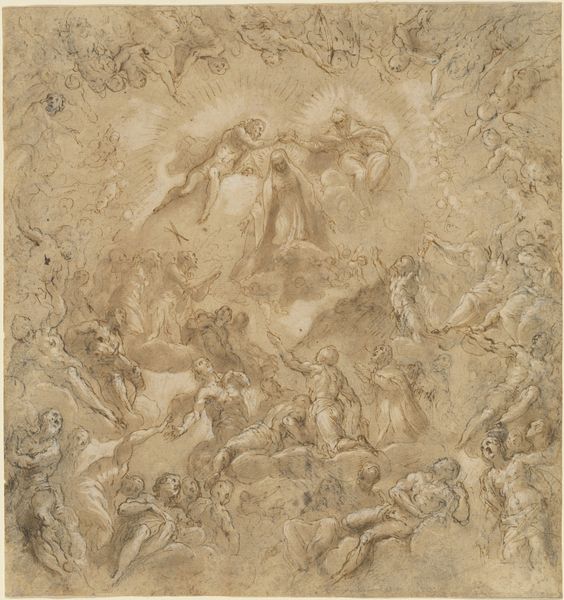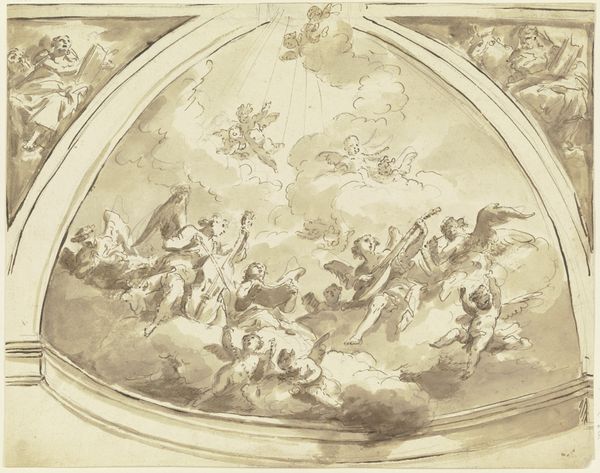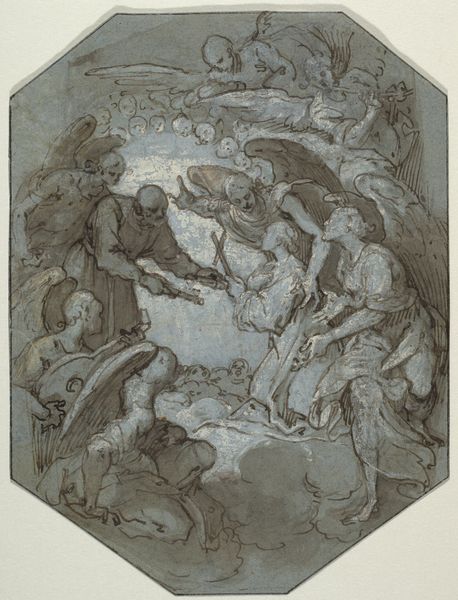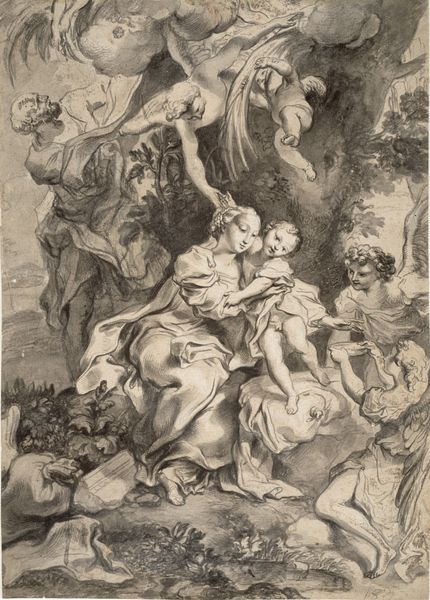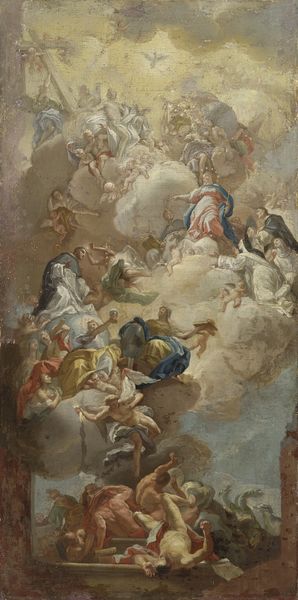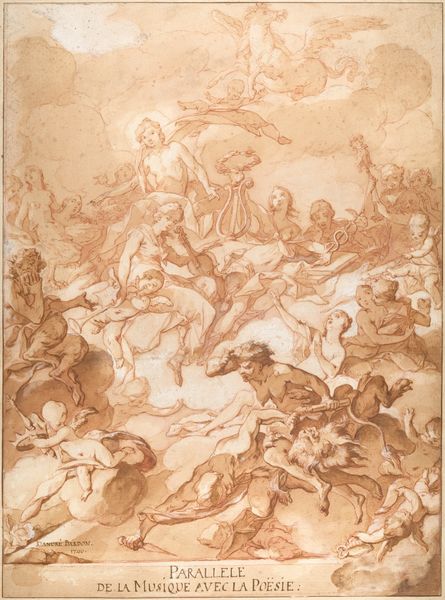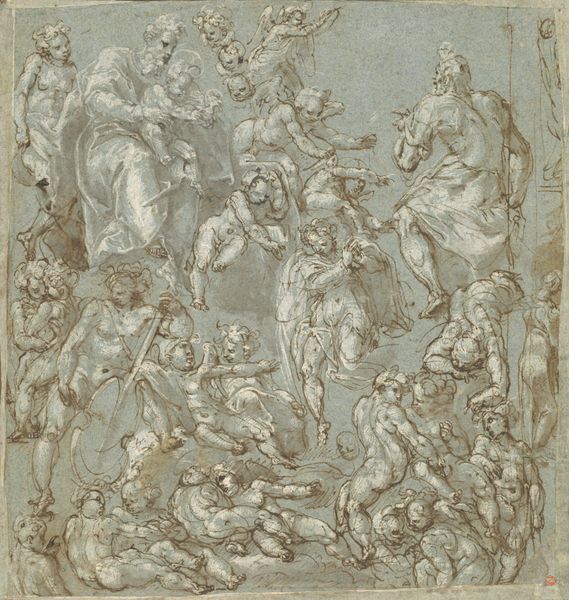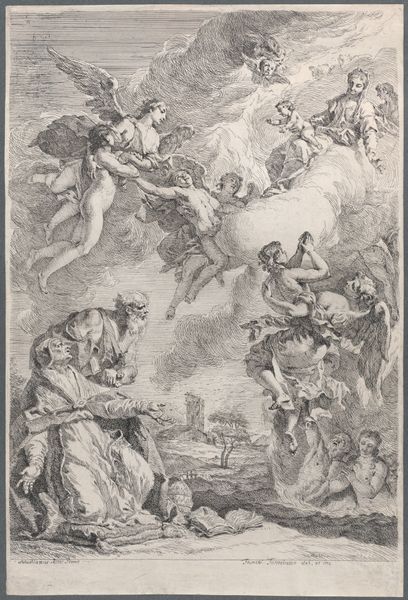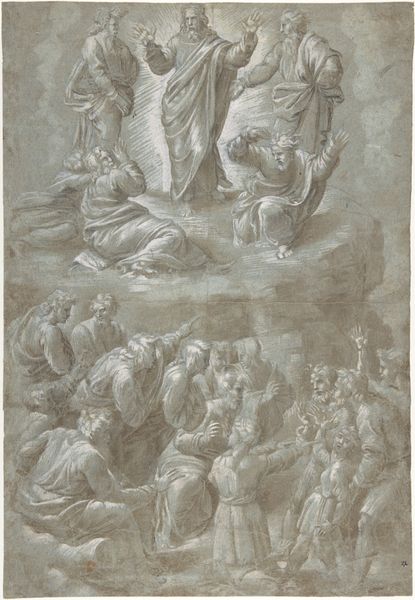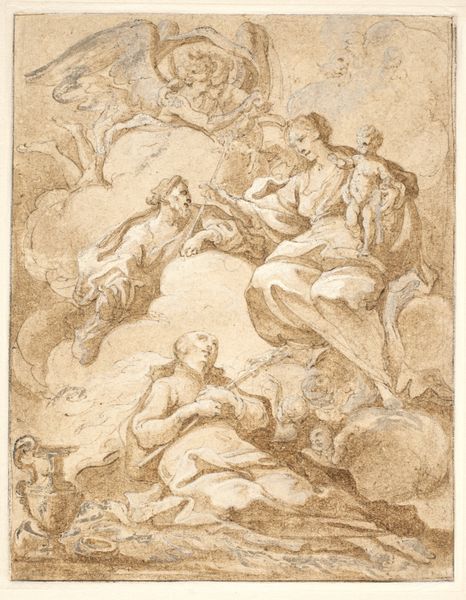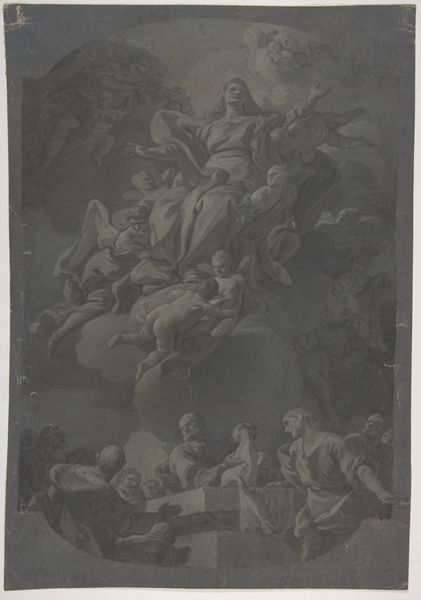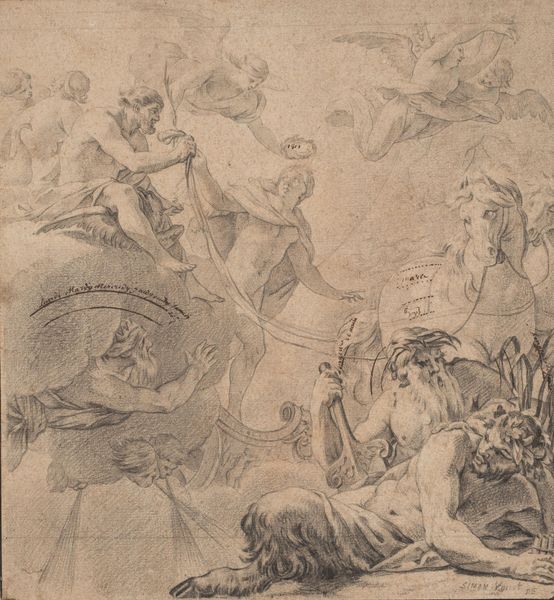
drawing, charcoal
#
drawing
#
allegory
#
charcoal drawing
#
mannerism
#
figuration
#
form
#
oil painting
#
line
#
charcoal
#
history-painting
#
charcoal
#
italian-renaissance
Copyright: Public Domain: Artvee
Curator: Look at this extraordinary charcoal drawing by Paolo Veronese. It’s titled *Allegory of the Redemption of the World* and scholars believe it was created sometime between 1528 and 1588. Editor: What a swirling vortex of figures! I feel a real sense of…unease, almost claustrophobia, despite the grand subject matter. It’s not what I expect from a Renaissance allegory, much more dramatic. Curator: It absolutely pushes the boundaries. You see the figures are arranged in tiers. We have this earthly realm at the bottom with the scene at Christ's tomb. Then, above, the celestial court unfolding amongst swirling clouds, the blessed and figures from the Old Testament. This staging connects to its potential function as a preparatory drawing for a large scale painting. Editor: Preparatory, really? I see a lot of intention in the expressive use of the charcoal. It's interesting the ways that light and shadow seem to coalesce and blur the contours, obscuring rather than revealing form. Almost as if the very act of redemption is shrouded in mystery and ambiguity. Curator: Exactly. Veronese was operating within a specific cultural moment in Venice. The Venetian school favored colorito which emphasized the supremacy of colour over line. Though primarily a draughtsman's method, this work, with its delicate chalky hues, suggests that Venetian ideal. We can also read its stylistic qualities as reflective of the Mannerist movement. The emphasis on elegance, exaggerated forms, and emotional intensity... Editor: It feels like the artist is really wrestling with the theological weight of the scene, a feeling of doubt or perhaps divine questioning. That tension really pulls me in, its so emotionally charged, and the movement of these masses of figures…like spirits being unleashed. It definitely deviates from some of the more staid allegorical portrayals I've seen. Curator: Veronese had this capacity to imbue these grand narratives with human emotion, rendering something ethereal and relatable simultaneously. I find myself constantly drawn back to his unique ability to use a limited medium to express a seemingly limitless theme. Editor: And it does feel remarkably fresh, a vital spark of humanity in this centuries-old allegory. The mark of true genius, perhaps? Curator: I couldn't agree more. Veronese asks us not just to observe the allegory, but to feel its transformative power.
Comments
No comments
Be the first to comment and join the conversation on the ultimate creative platform.
